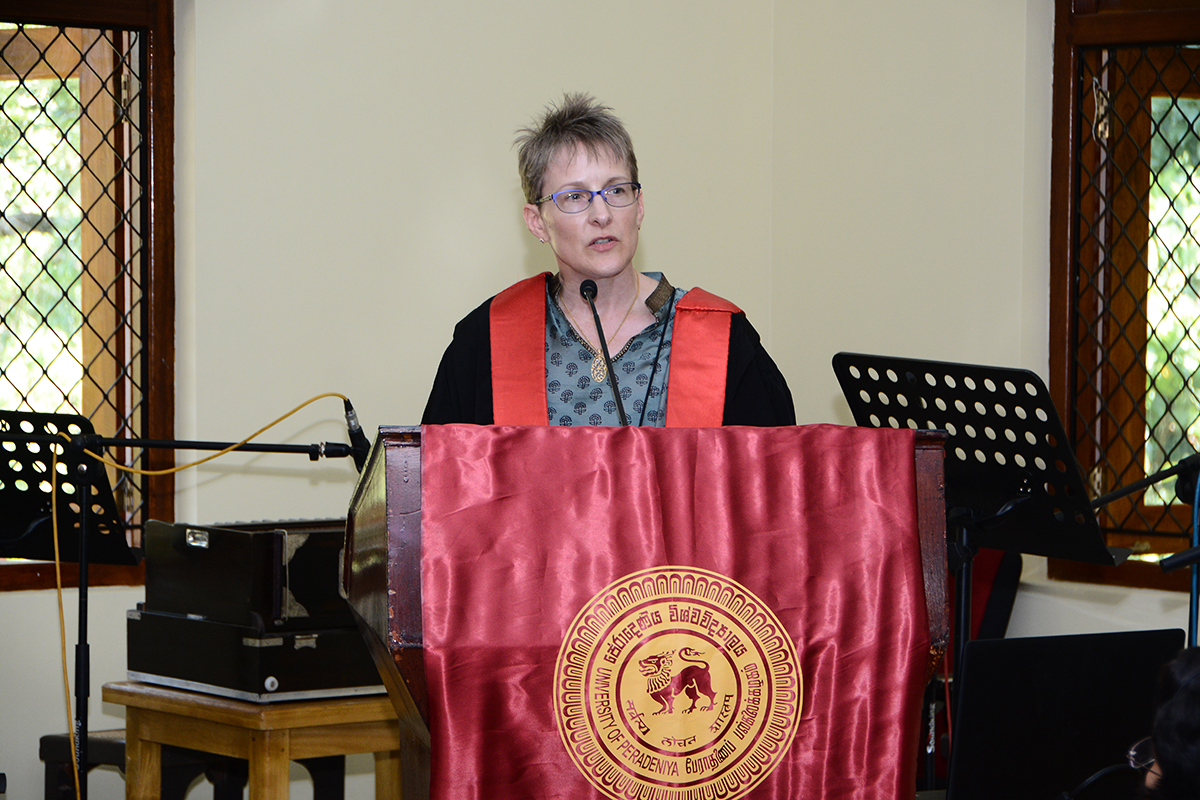Study abroad leads professor to lifelong academic study
By Linda B. Glaser

Anne Blackburn calls herself “a poster child for study abroad.” As an undergraduate, she went to Sri Lanka with the Intercollegiate Sri Lanka Educational Program, and that experience has directed her research interests ever since.
Because her college had no Asian studies major, she designed her own, focusing on Asian history and religion. She is now a professor in the Department of Asian Studies and a faculty member in Cornell’s South Asia Program (which she directs), Southeast Asia Program and the Religious Studies Program, with a focus on Buddhism in South and Southeast Asia.
Her academic life has not been without its challenges. After graduating from Swarthmore College, she returned to Sri Lanka on a Fulbright-funded sojourn to study languages, planning to develop a research project on how converts to Buddhism from abroad participate in Buddhist meditation centers. But she couldn’t continue the project because of political instability in the late 1980s. “I didn’t feel personally threatened,” recalls Blackburn, “but there were a lot of strikes that would stop the buses and lots of curfews, so everyone’s movement was really circumscribed.”
Her current research project arose from a class she taught, Monks, Texts and Relics: Transnational Buddhism in Southeast Asia. “The class opened this set of questions about Buddhist mobility and monastic exchange and tradition-building for me,” she says. “One of the great things about Cornell is being able to invent a course like that and teach it. This is a strength of the curriculum, that faculty can develop new courses that are close to their research and further their research agenda while teaching and giving students a taste of something that’s very fresh.”
Blackburn is fascinated by the story of intersecting text production, intellectual history, and political history in South and Southeast Asia in the early second millennium, a time when traffic linked South and Southeast Asia to the Middle East and Europe, as well as routes to China.
“The time period is an example of the intense and quite interesting kinds of connectivity before steamships or iPhones. It’s astonishing how quickly people could move and accomplish these huge transnational projects,” she says.
It was a time in South and Southeast Asia, says Blackburn, when new kingdoms associated with Buddhism (and sometimes also forms of Hinduism) sought to expand and to differentiate themselves from nearby competitors. In some cases, Buddhist monasteries were at the center of these kingdoms’ economies. It was not uncommon for a monk to receive acreage and be entitled to receive goods and services of tenants, Blackburn says. Like Christian monks in Europe who were often the second sons of noble families, Buddhist monks sometimes came from wealthy families with connections to the elites at courtly centers, so they were networked into centers of cultural and political power.
The new kingdoms in the region used what Blackburn calls “Buddhist technologies of statecraft” to strengthen their positions and consolidate their power. They imported Buddhist texts and monastic practices from prestigious places, such as Lanka (now Sri Lanka). “The new kings needed as much control as possible over land, economic networks, and signs of power and greatness,” says Blackburn, “and bringing in religious texts from prestigious places gave the king symbolic power.”
Because elite monks had so much religious and economic power, it mattered to the king which faction in court was aligned with which lineage of monks. By forcibly re-ordaining monks into lineages sympathetic to the king, monarchs reorganized the monastic hierarchies and monastic power in their favor.
Linda B. Glaser is a staff writer for the College of Arts and Sciences.
Media Contact
Get Cornell news delivered right to your inbox.
Subscribe